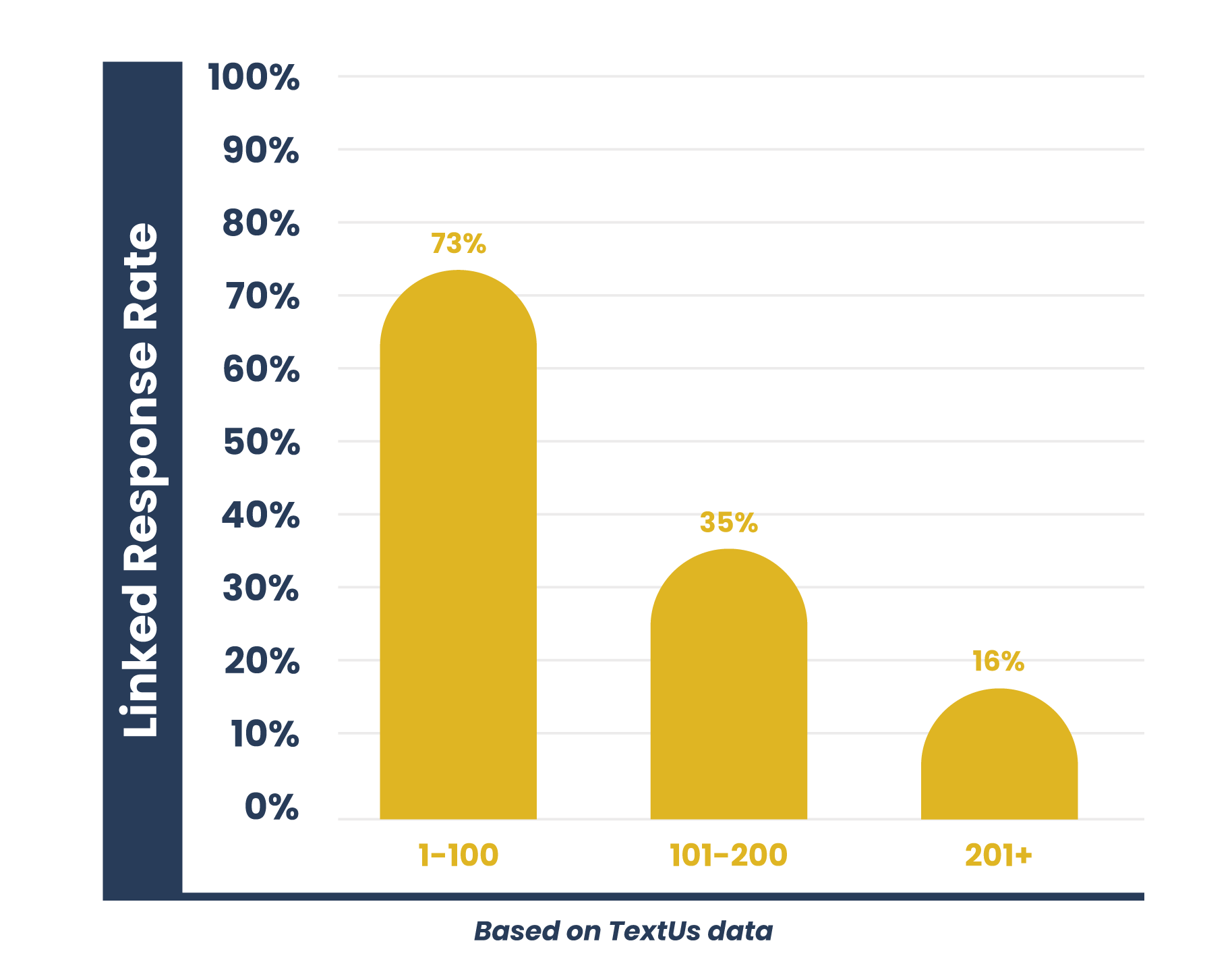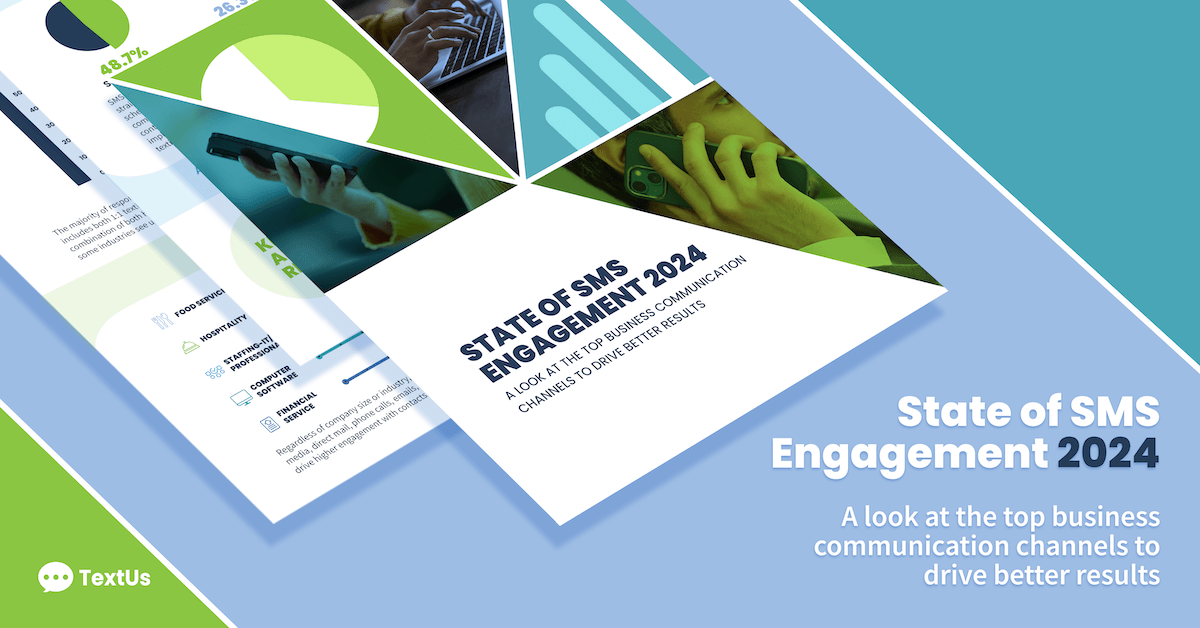Cracking the Code: Deciphering the Ideal Length of Text Messages

In business texting, character count isn’t just cosmetic—it’s strategic. The length of a message plays a subtle but powerful role in how it’s perceived and how effectively it performs. It can shape whether a recipient reads the message, understands it, and decides to act.
Too short, and a message might come across as vague or abrupt. Too long (over 100 characters), and it may overwhelm the reader or get buried in a busy inbox. Optimizing length means finding the balance—enough content to provide value, but not so much that it loses impact.
While the ideal number may vary by audience and use case, keeping texts clear, actionable, and tightly written helps drive better outcomes. Especially in an era of mobile-first communication, message efficiency is key to standing out and staying relevant.
The Data Behind Ideal Text Message Length
When asking the question, “How long should a text message be?” the data gives us a strong direction. Based on internal TextUs findings, SMS messages under 100 characters have a 2–5x higher response rate than longer messages. Short messages are easier to read, quicker to process, and less likely to be mistaken for spam.
Longer messages, especially those that exceed the 160-character limit, often get split into multiple messages depending on the mobile carrier or messages app, which can disrupt flow and lower readability. Short, focused messages keep the conversation moving and the recipient engaged.
How Message Length Impacts Different Audiences
Text messaging works across industries, but different groups respond best to different formats. In staffing, healthcare, and retail, short and directive texts perform best—think quick reminders, appointment confirmations, or interview follow-ups. These clients appreciate clarity and speed.
More formal industries like financial services or real estate may require slightly longer texts with a bit more detail. Gen Z tends to prefer ultra-brief, casual texts. Meanwhile, Gen X and Boomers often favor clearer messages with complete sentences. Tailoring your message length to your audience ensures it lands with maximum impact.
Use Case Examples: Crafting the Right-Length SMS
Let’s break it down with real-world examples: Text messages sent to mobile phones should be clear and concise—especially when you’re reaching out to unfamiliar phone numbers. These examples show how to deliver value without wasting characters.
Let’s break it down with real-world examples:
- Sales: “I believe we can reduce your costs 20%. When can we chat?” (67 characters)
- Recruiting: “Thanks for the interview! Looking forward to next steps.” (72 characters)
- Marketing/Event: “The webinar is today at 2pm! Join here: [link]” (61 characters)
Each of these texts is concise, value-driven, and fits comfortably under the 100-character sweet spot for higher engagement.
Understanding Audience Preferences
Text messaging is a quick interaction and successful communication hinges on understanding the personal preferences of your audience. Unlike emails or letters, texts are often more directly associated with personal communication, demanding a more personalized touch.
Demographic considerations play a significant role in understanding text message preferences. Individuals’ responses to texting nuances vary significantly across age groups, professions, and cultural backgrounds. Younger generations are accustomed to rapid-fire digital communication, so they most likely favor fewer characters and more to-the-point messages. Conversely, older demographics might appreciate more formal, detailed texts that mirror traditional communication methods.
Professionals, depending on their industry, might lean towards concise, action-oriented messaging to maximize efficiency during the workday. Cultural differences also influence texting behaviors, where the formality and frequency of messages can differ vastly. Understanding these demographic factors enables businesses to tailor the character count and content of their texting strategies, ensuring messages resonate well with the intended audience, fostering a deeper connection, and ultimately, driving desired responses and actions.
Best Practices for SMS Length Optimization
Here’s how to write better business texts:
- Stick to under 100 characters when possible.
- Front-load value: Put the most important detail at the start.
- Use personalization tokens: Add names or custom details to increase relevance.
- Avoid filler words: Every character should count.
- Test and iterate: Use A/B testing to find what resonates with your audience.
Mastering texting etiquette means combining structure, tone, and timing. Good SMS text messages are intentional, useful, and never waste the recipient’s attention.
See the Difference with TextUs
TextUs makes crafting the perfect message easier. With tools to monitor character count, personalize templates, and track performance, you can send smarter texts that get results. Our integrations with CRMs and ATS platforms help streamline your outreach and create seamless workflows.
Ready to take your communication strategy to the next level? See how optimized texting boosts response—book your demo today.

Get a TextUs Demo
Learn how thousands of businesses use TextUs everyday to communicate in real-time.





